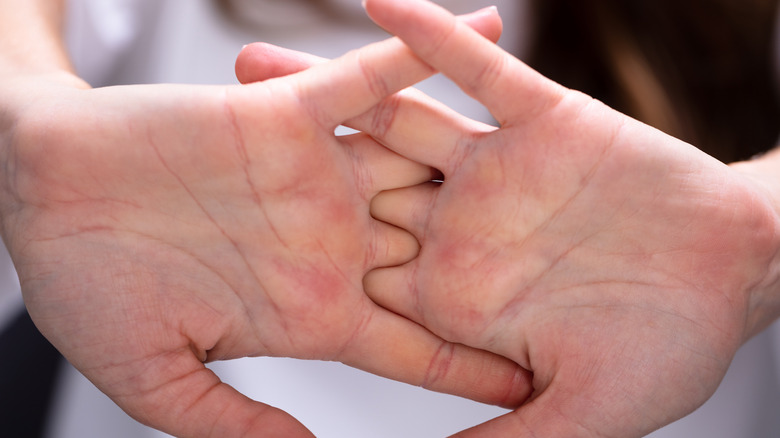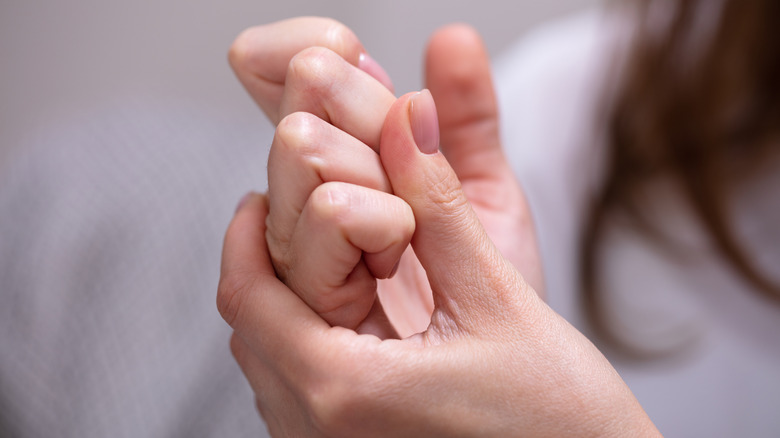What Really Happens When You Crack Your Knuckles
Maybe you've cracked your knuckles before or you do it all the time. Perhaps you know someone else who does it habitually. Have you ever wondered what exactly is happening to make that sound? While it might sound like something is cracking in the joints, the sound is actually just bubbles popping.
As part of the anatomy of a human finger, the knuckles are synovial joints, which have synovial fluid that lubricates and allows the joints to move freely and smoothly as two bones slide over each other. Nitrogen bubbles form in the synovial fluid through a process called tribonucleation. When you quickly stretch your knuckles — by pulling, pushing, or twisting your fingers — to the end of their range of motion, a kind of vacuum develops and makes the bubbles burst. Mayo Clinic orthopedic surgeon Dr. Sanj Kakar explained to the hospital's News Network, "You're breaking those bubbles up — just like bubble wrap." He described further, "You're pressing them, and then the bubbles are bursting."
After you crack your knuckles, it takes about 20 minutes for the nitrogen bubbles to form again. That's why you can't crack the same knuckle twice in quick succession.
Knuckle cracking is a satisfying experience
Cracking knuckles can be an annoying and even a startling sound to people nearby, but for those doing the cracking, it's a satisfying experience on both a physiological and a psychological level. From a physiological standpoint, DISC Sports and Spine Center orthopedic spine surgeon Dr. Rojeh Melikian told National Geographic that the practice "really does feel good." Although unproven, the relief that it creates may be because it stimulates the nerve endings around the knuckles, which releases endorphins and reduces pain. Some people even feel like their knuckles feel looser after cracking them.
However, Dr. Robert Klapper told the Cedars-Sinai Blog, "Feeling good after cracking your knuckles is a psychological experience." Louisiana chiropractor Dr. Matthew Cavanaugh agreed when he told National Geographic that when the practice becomes habitual, it can have a placebo effect. "I recently discovered the ASMR videos on TikTok," he said. "There are people that just want to hear the popping sound. They don't even get the physical release."
It's not harmful to crack knuckles
A lot of people believe that cracking your knuckles leads to arthritis. You might have even heard that from your parents or grandparents while growing up. On the contrary, there's no scientific evidence to support that claim. Studies even show that habitual knuckle crackers have the same range of motion, grip strength, and overall function as people who don't do it. It doesn't make arthritis worse either.
However, there's still a risk associated if you pull, press, or twist your fingers too far or in the wrong direction. In such cases, you could dislocate the joint or damage a ligament, a type of fibrous connective tissue. Just keep in mind that you shouldn't feel any pain during or see swelling or disfigurement after knuckle cracking. If you do, the joint may be damaged or you could have an underlying condition, such as arthritis, gout, or trauma from an injury — all of which warrant consulting a medical professional.


